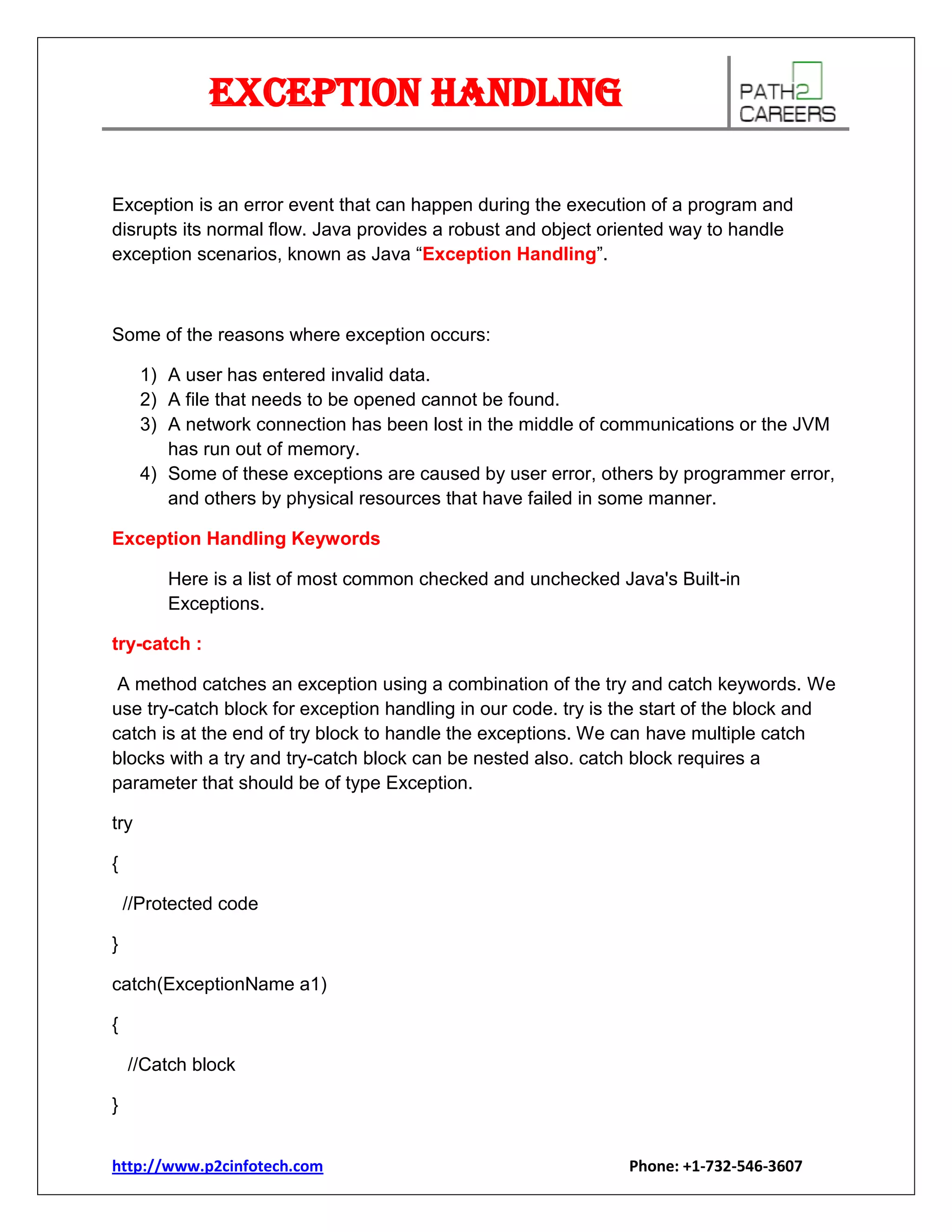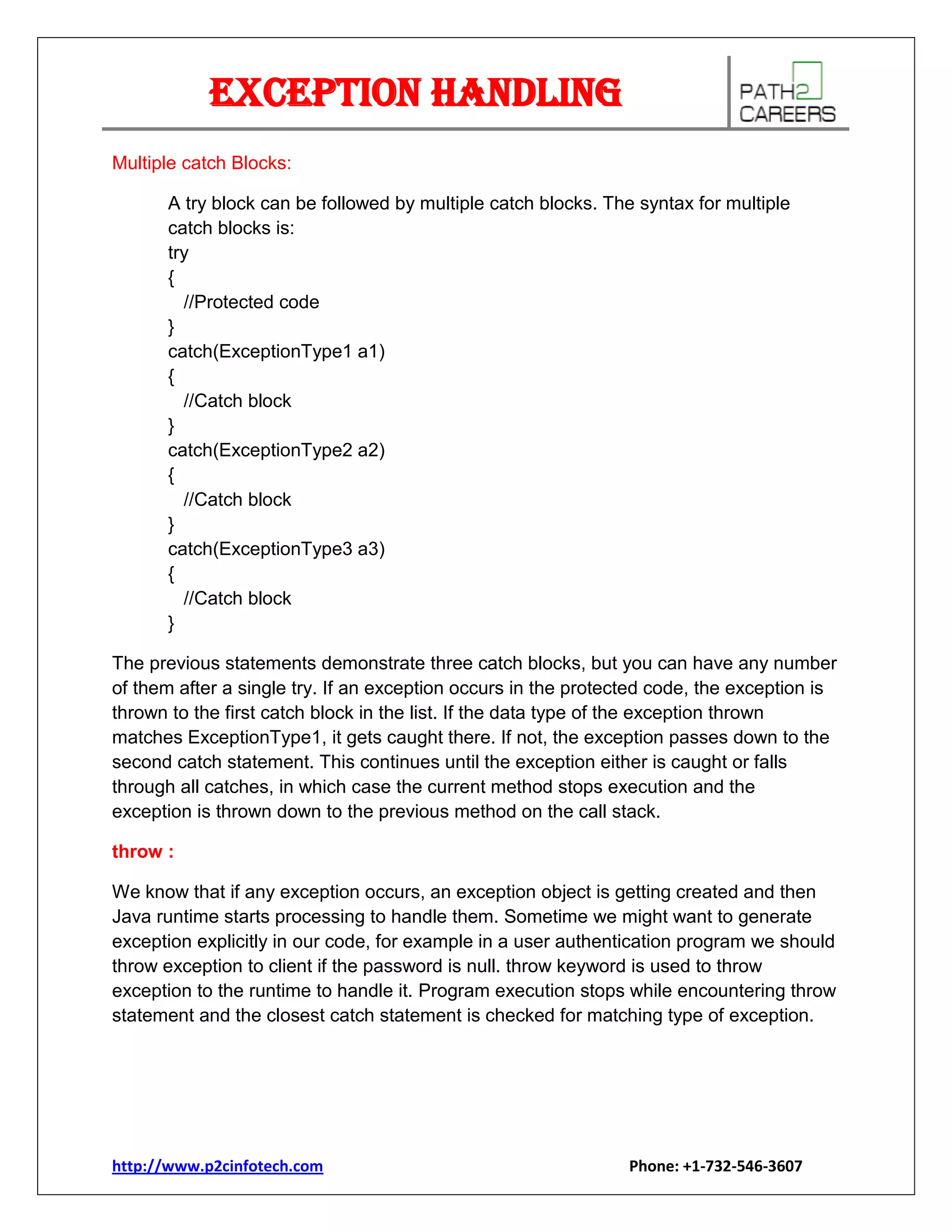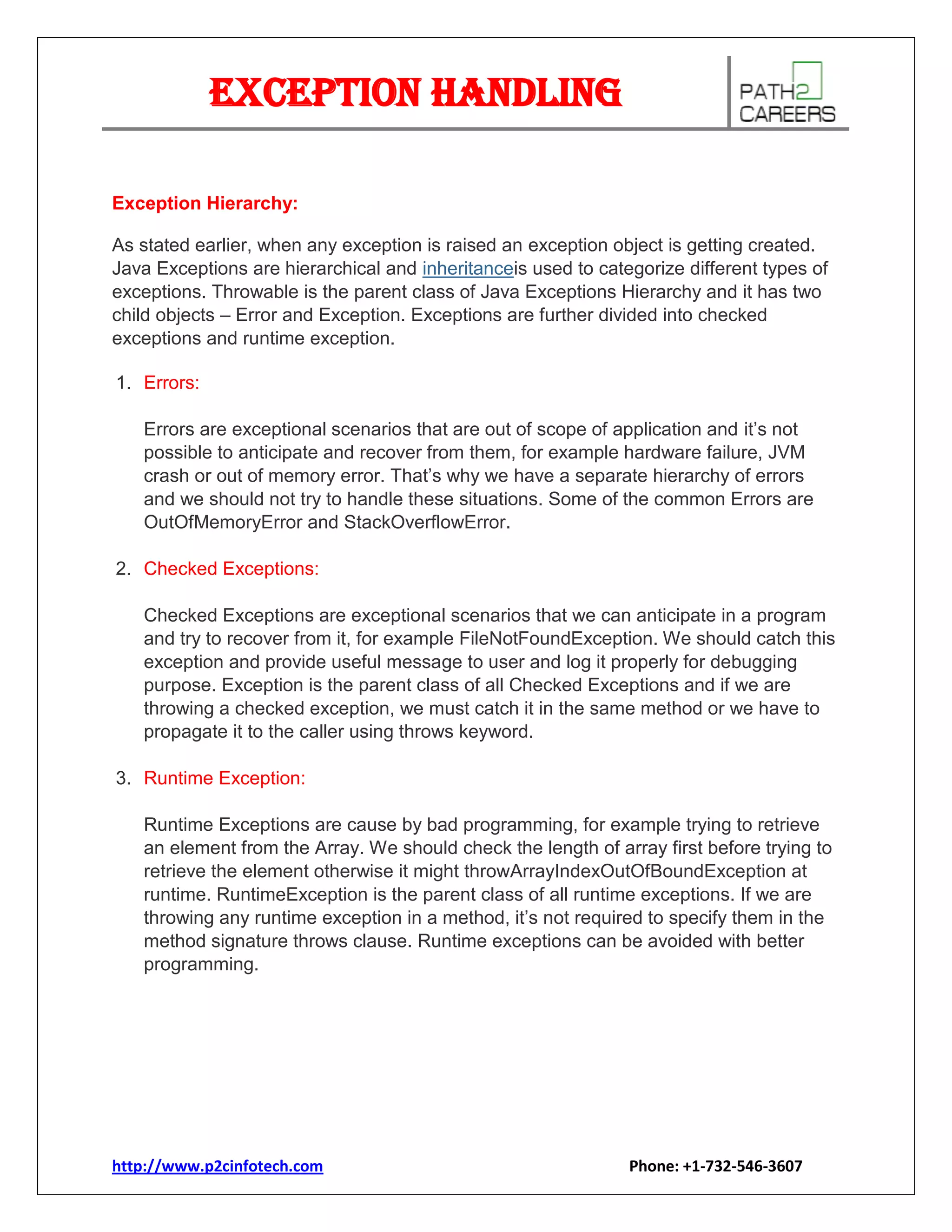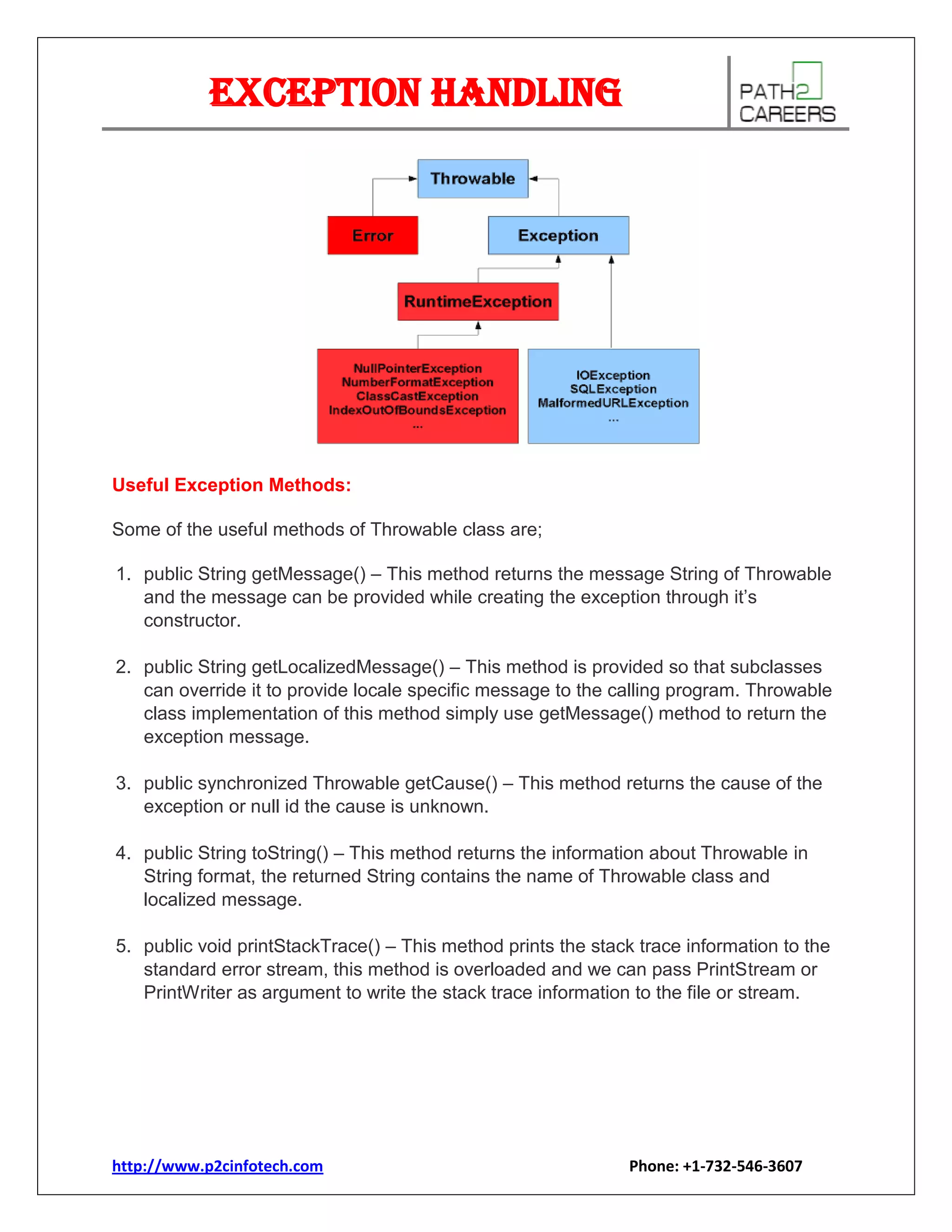Exception handling in Java provides a robust way to handle errors and exceptions that occur during program execution. The try-catch block allows code to be wrapped in a try block to protect it, while catch blocks handle any exceptions. Multiple catch blocks can be used to handle different exception types. The throw keyword is used to manually throw an exception, while throws is used to indicate unhandled exceptions in a method signature. Finally, the finally block is used for cleanup and always executes regardless of exceptions.


![Exception Handling
Example:
Class Test
{
Static void avg()
{
Try
{
throw new ArithmeticException(“demo”);
}
Catch(ArithmeticException e)
{
System.out.println(“Exception Caught”);
}
}
Public static void main(String args[])
{
avg()
}
}
throws :
When we are throwing any exception in a method and not handling it, then we need to
use throws keyword in method signature to let caller program know the exceptions that
might be thrown by the method. The caller method might handle these exceptions or
propagate it to it’s caller method using throws keyword. We can provide multiple
exceptions in the throws clause and it can be used with main() method also.
http://www.p2cinfotech.com
Phone: +1-732-546-3607](https://image.slidesharecdn.com/exceptionhandling-131112014708-phpapp02/75/Java-Exception-handling-3-2048.jpg)
![Exception Handling
Example:
Class Test
{
Static void check() throws Arithmetic Expression
{
System.out.println(“Inside check function”);
throw new ArithmeticException(“demo”);
}
Public static void main(String args[])
{
Try
{
Check();
}
Catch(ArithmeticException e)
{
System.out.println(“caught” +e);
}
}
}
finally :
finally block is optional and can be used only with try-catch block. Since exception halts
the process of execution, we might have some resources open that will not get closed,
so we can use finally block. finally block gets executed always, whether exception
occurred or not.
http://www.p2cinfotech.com
Phone: +1-732-546-3607](https://image.slidesharecdn.com/exceptionhandling-131112014708-phpapp02/75/Java-Exception-handling-4-2048.jpg)
![Exception Handling
Example:
class ExceptionTest
{
public static void main(String args[])
{
int a[]= new int[2];
System.out.println(“out of try”);
try
{
System.out.println(“access invalid element” + a[3]);
}
finally
{
System.out.println(“finally is always executed”);
}
}
}
Common Exceptions:
In Java, it is possible to define two catergories of Exceptions and Errors.
JVM Exceptions: These are exceptions/errors that are exclusively or logically thrown by
the JVM. Examples : NullPointerException, ArrayIndexOutOfBoundsException,
ClassCastException.
Programmatic exceptions: These exceptions are thrown explicitly by the application or
the API programmers
Examples: IllegalArgumentException, IllegalStateException.
http://www.p2cinfotech.com
Phone: +1-732-546-3607](https://image.slidesharecdn.com/exceptionhandling-131112014708-phpapp02/75/Java-Exception-handling-5-2048.jpg)

